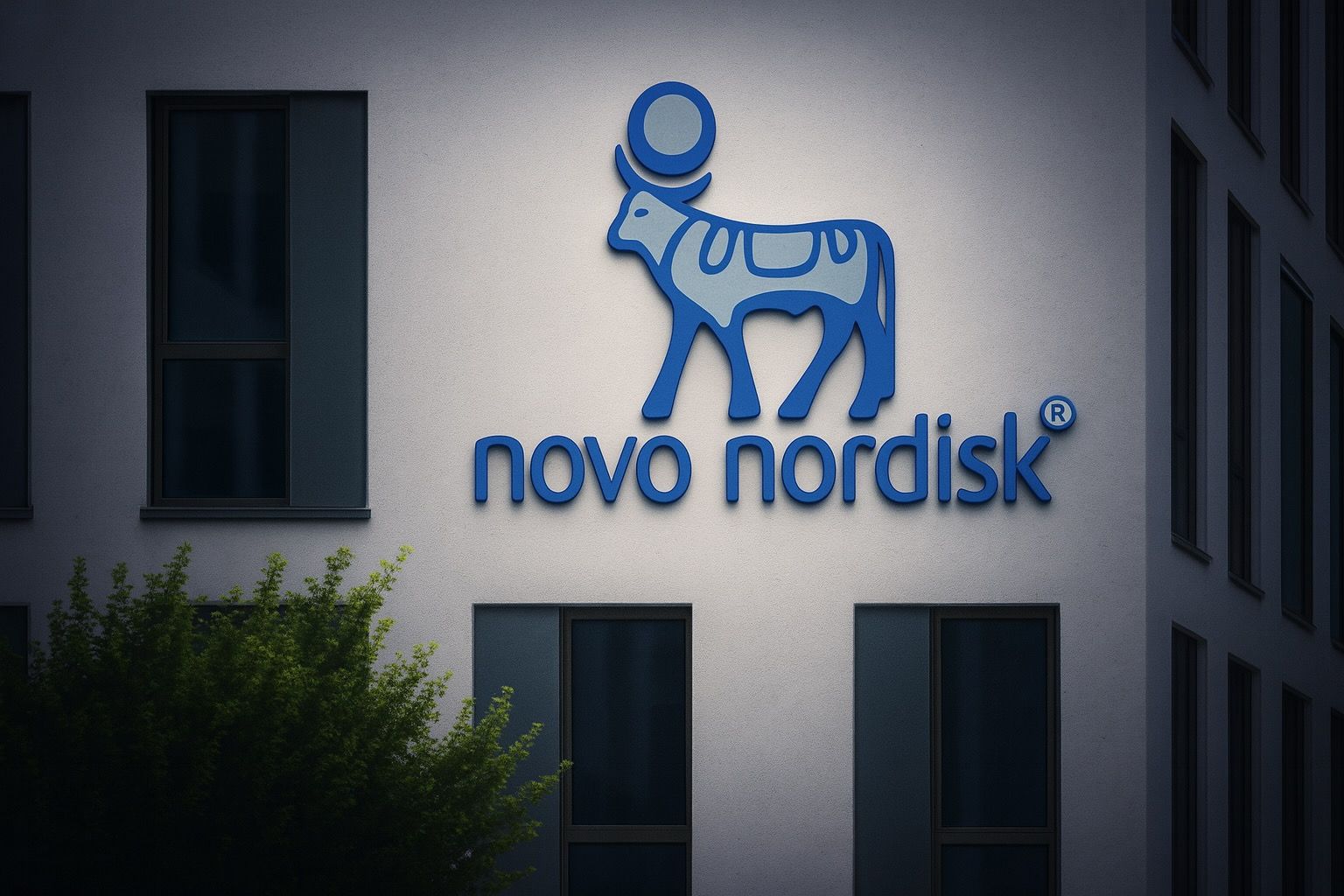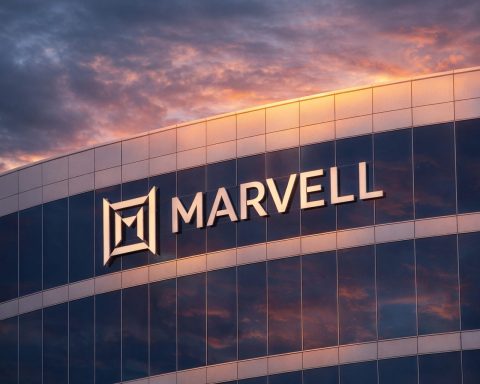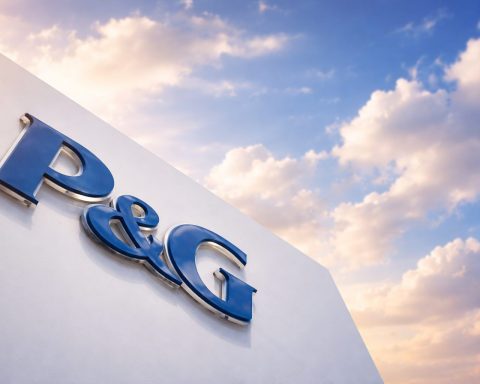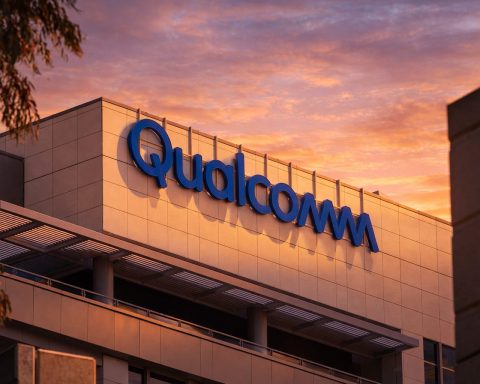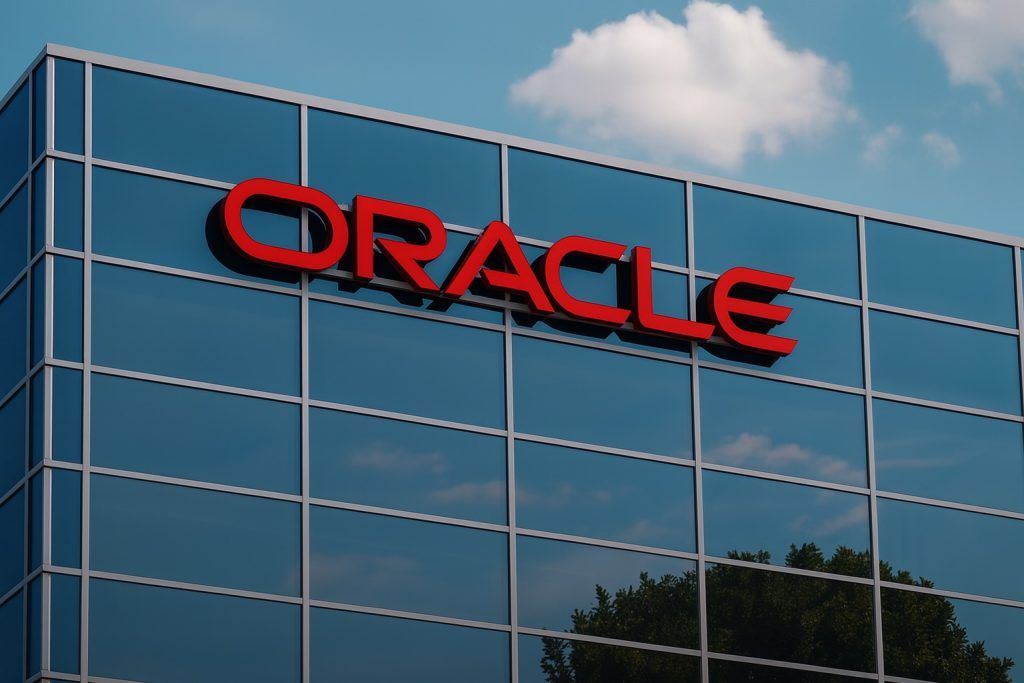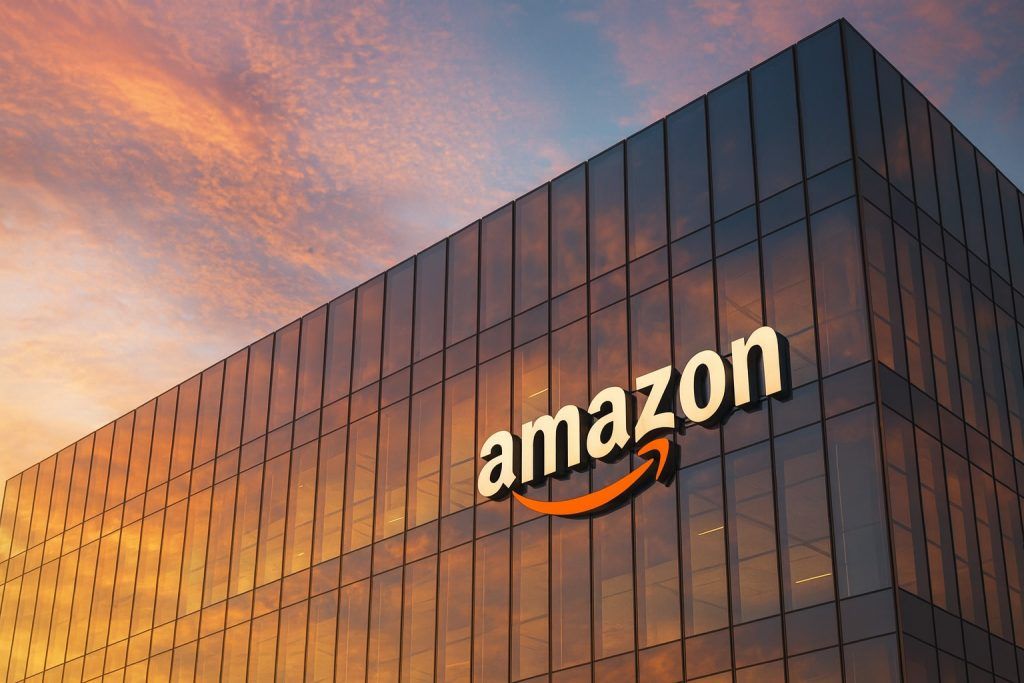- Stock Under Pressure: Novo Nordisk (NYSE: NVO) shares fell sharply on Oct. 17, 2025 – trading around DKK 341.35 in Copenhagen (−6.7%) [1] and closing at $56.09 in New York on Oct. 16 [2]. U.S. pre-market quotes indicated a further drop near $53.40 (−4.8%) ahead of the Oct. 17 open [3]. The stock has plunged over 40–50% year-to-date, erasing hundreds of billions in market value [4] [5].
- Recent Big Moves: Novo Nordisk is making bold plays beyond its core diabetes/obesity franchise. In the past week it agreed to buy Akero Therapeutics for $5.2 B (gaining a promising fatty-liver disease drug) [6] and licensed Omeros’s rare-disease antibody for up to $2.1 B [7]. These deals aim to diversify Novo’s pipeline, but investors have reacted cautiously – Novo’s stock dipped ~2% on the Akero news [8] and was flat-to-down (~−1.5%) after the Omeros deal [9].
- Weight-Loss Boom Cooling: After a meteoric 2021–2023 run fueled by obesity drug Wegovy, Novo is now grappling with intense competition from Eli Lilly’s Mounjaro/Zepbound and even off-brand “compounded” versions of semaglutide [10]. Lilly briefly overtook Novo in U.S. obesity prescriptions this year [11] and in June began selling its highest-dose Zepbound injections directly to consumers online [12]. Novo’s new CEO Mike Doustdar has responded with an aggressive turnaround – slashing ~9,000 jobs (11.5% of staff) [13] [14] to cut fat and refocus on growth areas.
- Market Sentiment & Analyst Views: Sentiment is cautious. Morgan Stanley downgraded NVO to “Underweight” in late September, citing stagnating demand for Wegovy/Ozempic and looming competition (they cut their price target to $47 from $59) [15] [16]. Bank of America expects Novo to issue yet another profit warning at Q3 results in November [17]. Still, the analyst consensus is a mixed “Hold/Buy” (mean rating ~2.4/5) [18], and some see upside if Novo’s expansion bets pay off – e.g. Jefferies projects Novo’s new NASH drug could hit $2–3 B in annual sales [19] and calls it a potential “cornerstone therapy” for fatty liver disease [20].
- Growth Strategy – Risks & Rewards: Novo Nordisk’s management insists the current pain will yield long-term gain. The company is doubling down on its GLP-1 portfolio (including an oral weight-loss pill in development) [21] and investing in new markets like NASH (fatty liver disease) and rare blood disorders. These initiatives target multi-billion-dollar opportunities – NASH alone afflicts ~17 million Americans with no cure [22] – but come with high R&D costs and execution risk. As one Novo shareholder put it, “They need to reignite investor confidence with an appealing growth story for the future… [after] the obesity market was misjudged” [23] [24]. The next few months will be critical in determining if Novo’s weight-loss empire can regain momentum or if 2025’s slump marks a lasting turning point.
NVO Stock Slides as Weight-Loss Hype Cools
Novo Nordisk’s stock has been on a wild ride. After becoming Europe’s most valuable company in 2022–2023 on the back of its smash-hit obesity drug Wegovy, the Danish pharma giant has seen its fortunes reverse sharply in 2025. As of October 17, NVO shares trade in the mid-$50s – down nearly 50% from January levels [25] [26] and miles below the late-2024 peak (when Novo’s market cap neared $650 B) [27] [28]. What happened? In short, the once-unbounded GLP-1 weight-loss boom has hit reality.
Several factors have converged to deflate Novo’s valuation. Competition has intensified: U.S. rival Eli Lilly – maker of diabetes drug Mounjaro (tirzepatide) – has aggressively entered the obesity fray with Zepbound (tirzepatide’s brand name for weight loss). Lilly’s dual-acting GLP-1 drug showed such strong results that it “overtook Wegovy in weekly prescriptions in the U.S.” earlier this year [29]. Although Wegovy scripts have since accelerated and narrowed Lilly’s lead [30], Novo no longer has the market to itself. Moreover, a wave of clinics and compounding pharmacies in the U.S. began selling “copycat” semaglutide formulations (often illicitly mixed from bulk drug) at lower costs, nibbling at Novo’s demand [31].
On top of that, supply and access issues have made the obesity market “more consumer-driven than anticipated,” some investors say [32] [33]. Wegovy’s high price and insurance hurdles limit many patients to out-of-pocket purchases, meaning demand can ebb and flow with consumer sentiment. “The obesity market was misjudged,” admits one Novo shareholder, noting that Novo “expanded [its] organizational complexity too quickly” during the hype phase [34] [35]. Indeed, Novo went on a hiring spree that nearly doubled its headcount in five years [36] – a bet on ever-surging growth that has since backfired.
Profit warnings have followed. Novo Nordisk has already cut its 2025 sales and profit outlook multiple times this year [37] [38]. In May, it cited “lacklustre U.S. prescription data” for Wegovy as it trimmed guidance [39]. By September, under pressure from investors, Novo ousted its CEO and installed company veteran Maziar “Mike” Doustdar as the new chief executive [40]. Doustdar moved swiftly with an ambitious restructuring: in what is Denmark’s largest-ever layoff, Novo is slashing 9,000 jobs (~11.5% of its workforce) [41] [42]. The cuts “reignite growth” by eliminating bureaucracy and saving ~DKK 8 B (~$1.25 B) annually [43] [44] – funds to be reinvested in core products. “This is the new CEO’s first major move to simplify Novo’s structure and redirect resources toward growth in diabetes and obesity,” said one analyst [45] [46]. Novo expects to reinvest the savings into expanding production (to meet still-rising demand) and into new product launches, including a pill version of Wegovy under development [47] [48].
The market’s reaction to these moves has been mixed. Initially, news of the layoffs and reset strategy sent Novo’s stock up 2% on Sept. 10 (investors welcomed the cost-cutting) [49]. But the optimism was fleeting – shares soon resumed their slide amid broader skepticism. Year-to-date, Novo’s stock chart remains deep in the red, reflecting eroded investor confidence. As one portfolio manager put it, “They need to reignite investor confidence with an appealing growth story for the future” [50]. The question now is whether Novo Nordisk can craft that next growth story to win back the market’s faith.
Surprise Deals: Novo Bets Big on NASH and Rare Diseases
Amid this turbulence, Novo Nordisk hasn’t been sitting idle. In fact, the company has embarked on a strategic shopping spree to expand its drug portfolio beyond weight loss and diabetes. In October alone, Novo announced over $7 billion in deal-making, targeting two high-potential areas:
- Fatty Liver Disease (NASH/MASH): On Oct. 9, Novo revealed it will acquire Akero Therapeutics (NASDAQ: AKRO) for up to $5.2 B [51]. Akero’s prize asset is efruxifermin (EFX), a Phase 3 drug for NASH – a chronic fatty liver disease affecting ~5% of adults (around 17 million in the U.S.) [52]. NASH, also called MASH, had no approved medications until recently [53], making it a hot “next big market” in pharma. Analysts dub NASH the “next multibillion-dollar” opportunity [54] – a market so enticing that big players are racing to stake their claims. (For instance, Roche just agreed to buy NASH drug developer 89bio for up to $3.5 B [55], and Madrigal Pharmaceuticals launched the first non-GLP-1 NASH drug (resmetirom) in early 2025, racking up $350 M in H1 sales [56].) Novo’s own GLP-1 powerhouse Wegovy actually became the first FDA-approved treatment for NASH/MASH in August 2025 [57] – indicating that weight-loss drugs can improve liver health. By acquiring Akero, Novo gains a complementary approach: EFX is a potent FGF21 analog that has shown unprecedented efficacy in clinical trials (reversing liver fibrosis in some patients) [58]. Novo will pay $4.7 B in cash plus $0.5 B contingent on EFX’s future approval [59]. The deal has both boards’ approval and is set to close by end of 2025 [60] [61]. Market Reaction: Akero’s stock soared ~19% to ~$55 on the buyout news, near the offer price [62]. Novo’s own shares, however, dipped ~2% initially on Oct. 9 as investors weighed the hefty price tag [63]. Novo stated that the acquisition will “slightly” increase 2026 R&D costs but won’t affect 2025 earnings guidance [64] [65]. Notably, this is the first major move by CEO Doustdar, who took the helm in July and had vowed to focus on metabolic diseases while trimming everything else [66]. “This acquisition embodies Novo Nordisk’s relentless ambition to move faster, go further,” Doustdar proclaimed, calling EFX a potential “first- and best-in-class” therapy for NASH [67]. Novo’s R&D chief Martin Lange echoed that sentiment, saying “Novo aims to dominate the fatty liver space by attacking the disease on multiple fronts.” [68] Combining EFX’s anti-fibrotic liver repair with Novo’s GLP-1 drugs (which reduce liver fat) could deliver a one-two punch against NASH [69] [70]. In fact, an early trial of EFX + semaglutide showed synergistic effects – a 65% drop in liver fat in 12 weeks, far greater than GLP-1 alone [71] [72]. If all goes well, Novo hopes to launch EFX around 2027–28, potentially seizing leadership in a multi-billion dollar new market.
- Rare Blood & Kidney Disorders: Less than a week after the Akero deal, Novo struck another surprise agreement on Oct. 15 – this time with Omeros Corporation. Novo will pay up to $2.1 B to license Omeros’s experimental antibody zaltenibart (OMS906) [73]. Zaltenibart is a MASP-3 inhibitor for ultra-rare blood and kidney diseases. In particular, it showed promise in PNH (paroxysmal nocturnal hemoglobinuria), a serious blood disorder, by improving patients’ hemoglobin levels in Phase 2 trials [74] [75]. Novo sees this antibody – which targets the complement immune system – as potentially “best-in-class” for PNH and related disorders [76]. Under the deal, Omeros gets $340 M upfront plus milestones and tiered royalties that could sum to $2.1 B over time [77] [78]. It’s structured as a license/asset purchase (not a full acquisition) and should close in Q4 2025 [79] [80]. Omeros, a small Seattle biotech, will hand off global development of OMS906 to Novo, while refocusing on its other drug (narsoplimab) pending FDA review [81] [82]. Market Reaction: This news lit a fire under Omeros’s stock – “more than doubling” to around $10 as traders cheered the cash infusion [83] [84]. Omeros shares ultimately closed up ~146% on Oct. 15 [85]. Novo Nordisk’s stock, by contrast, barely budged; ts2.tech noted Novo’s shares were roughly flat (down ~1.5%) intraday on the announcement [86]. In Copenhagen, Novo’s price hovered near DKK 362 (~$52) on Oct. 15 [87] – suggesting investors saw the deal as modest in the context of Novo’s ~$180 B market cap. Strategically, though, this move signals Novo’s ambitions beyond diabetes/obesity. “The deal is part of Novo’s push into rare diseases,” TechStock² observed, noting it followed on the heels of the Akero buyout [88]. While PNH is far afield from metabolic syndrome, Novo’s management likely views it as an opportunistic addition: a well-validated drug candidate in a niche market where Novo can leverage its clinical and commercial muscle. Novo plans to initiate a global Phase 3 trial of OMS906 in PNH after closing [89] [90]. If successful, zaltenibart could diversify Novo’s revenue with a high-priced orphan drug. Novo’s Chief Scientific Officer lauded the antibody’s “novel mode of action” in the complement pathway [91], and Omeros’s CEO expressed confidence that Novo’s global reach will “unlock [its] potential” [92] [93].
Together, these two deals underscore a pivotal shift in Novo Nordisk’s growth strategy. Under CEO Doustdar, Novo is doubling down on its core strength (metabolic diseases) while also buying into adjacent areas where it sees high unmet need and synergies. Doustdar has made clear he’s focusing resources on obesity, diabetes, and related cardio-metabolic or rare diseases – and moving “faster, further” to seize opportunities [94]. Of course, mergers and acquisitions come with execution risks: Novo is paying top-dollar (e.g. ~$5 B for a company with no revenues in Akero’s case [95]), and it could be years before these bets pay off – if they ever do. But given Novo’s cash-generating core business (still highly profitable) and the enormous potential markets (obesity, NASH, etc.), many analysts see logic in these moves. “Novo aims to dominate [NASH] by attacking the disease on multiple fronts,” said R&D chief Lange [96] – a signal that Novo doesn’t intend to cede any ground to rivals in the next wave of therapies.
GLP-1 Showdown: Lilly, Competition, and the Market Landscape
Novo Nordisk’s rise and recent stumbles cannot be understood without the context of the GLP-1 drug frenzy. GLP-1 receptor agonists – the class including Novo’s semaglutide (Ozempic for diabetes, Wegovy for obesity) and Lilly’s tirzepatide (Mounjaro/Zepbound) – have revolutionized treatment of Type-2 diabetes and obesity in the last few years. Demand for these treatments has been so intense that Novo struggled to manufacture enough supply in 2023, and by mid-2024 semaglutide was a household name (as “Ozempic/Wegovy”). However, success breeds competition:
- Eli Lilly’s Surge: Lilly, Novo’s longtime diabetes rival, emerged as a formidable challenger in obesity. Lilly’s Mounjaro (approved for diabetes in 2022) showed even greater weight loss than semaglutide in trials, and an FDA decision on its obesity indication (branded Zepbound) came around late 2024. By 2025, Lilly was not only matching Novo – it briefly surpassed Novo in new obesity prescriptions in the U.S. [97]. Sensing an opportunity, Lilly took extraordinary steps: in June, Lilly announced it would sell the two highest doses of Zepbound directly through its website to cash-paying patients [98]. This move to online direct-to-consumer sales was unprecedented in pharma and aimed to capture demand from customers frustrated by insurance hurdles. It effectively undercut Novo’s model, as Wegovy’s highest doses remained hard to get for many patients. Lilly’s bold strategy signaled how fierce the GLP-1 race had become – and it rattled Novo’s investors (Novo’s stock sank ~4% on the day of that news and an analyst downgrade) [99].
- Copycats and Generics: Novo also faces threats from compounded semaglutide and looming generics. In the U.S., med-spas and telehealth startups started offering off-label semaglutide formulations (often sourced from compounding pharmacies) at lower prices. Reuters notes Novo is trying to “fend off… a wave of compounded copycat drugs” in this “fierce weight-loss drug battle.” [100] While regulators have cracked down on some compounders, the phenomenon highlighted pent-up demand and pricing pressure. Additionally, semaglutide’s primary patent will expire in a few years; Morgan Stanley analysts pointed out that generic GLP-1 versions could hit some markets (e.g. Canada, emerging countries) as early as 2026 [101] [102]. Novo’s international Ozempic sales might see an impact from these cheaper competitors on the horizon [103] [104].
- New Entrants & Combinations: Beyond Lilly, virtually every major pharma is now vying for a piece of the metabolic pie. Companies are testing combo therapies (adding GIP, glucagon, or amylin analogues to GLP-1) to further boost weight loss. Novo itself has a combo called CagriSema (semaglutide + cagrilintide, an amylin analog) in Phase 3, and Lilly has a triple-agonist in development. However, expectations need to be managed: Morgan Stanley’s downgrade of Novo cited “doubts about [Novo’s] experimental obesity/diabetes combo drug CagriSema outperforming Lilly’s Zepbound.” [105] In other words, some on Wall Street aren’t convinced Novo’s next-gen GLP-1 combos will leapfrog Lilly’s offerings.
- Broader Market Effects: The GLP-1 craze has even begun impacting other industries (for instance, analysts talk of reduced food demand as more people lose weight). In this gold rush, Novo and Lilly have been the clear front-runners. Notably, for a time Novo Nordisk’s market cap eclipsed $600 B, briefly making it the most valuable company in Europe. That crown has slipped – as of October 2025, Lilly’s market cap and growth outlook appear stronger, reflecting its ascendancy in obesity treatment. Novo’s leadership in GLP-1 is now being seriously challenged. The company’s recent job cuts and sharpened focus are explicitly intended to “fend off intense competition from U.S. rival Eli Lilly” [106]. As CEO Doustdar put it, “We need to have the best-in-class launches, especially as competition is increasing… we don’t have to spare a dime” [107] [108]. In other words, Novo is now in fight-or-flight mode to defend its franchise.
Despite these competitive pressures, it’s important to note the obesity/diabetes market itself is still expanding rapidly. Globally, tens of millions more patients could benefit from GLP-1 therapies, and both Novo and Lilly are scrambling to increase manufacturing. Novo’s Wegovy and Ozempic sales, while slower than hyper-bullish forecasts, are still growing year-on-year – just at a more moderate pace. The company is also launching Wegovy in new countries and pursuing additional indications (e.g. Wegovy for heart failure and kidney disease benefits, which are being studied). This broader context suggests that Novo Nordisk is down, but not out in the weight-loss wars. The coming year will likely see a two-horse race with Lilly, and possibly room for both to thrive if they can meet the immense demand.
Expert Commentary and Analyst Forecasts
Wall Street’s love affair with Novo Nordisk has cooled alongside the stock, but opinions remain divided on its outlook. Here’s a snapshot of what experts are saying:
- Morgan Stanley’s Bearish Take: In late September, Morgan Stanley downgraded NVO from Equal Weight to Underweight, effectively a sell recommendation [109]. The MS analysts believe the market is overestimating GLP-1 growth. They noted that U.S. prescriptions for Ozempic and Wegovy have been stagnating recently [110]. Critically, they forecast Novo’s U.S. diabetes GLP-1 sales declining by 2026 due to Lilly’s market share gains and potential price pressures [111] [112]. The team also warned that generic semaglutide could emerge in some markets (e.g. Canada) sooner than expected, crimping international growth [113]. Another concern: Novo has been testing semaglutide in Alzheimer’s disease, which some have hyped as a potential new use. Morgan Stanley is skeptical – predicting the upcoming trial results will “likely fall short” of a statistically significant benefit in Alzheimer’s [114]. They also see risk that U.S. payers (Medicare) may eventually demand price discounts on Wegovy/Ozempic, squeezing margins [115]. In sum, Morgan Stanley painted a picture of slowing growth and rising headwinds, cutting their 12-month price target to $47 (about 15% below recent prices) [116] [117]. This downgrade weighed on the stock – Novo’s shares were trading below $55 after the report, extending their year-to-date declines [118].
- Bank of America and Profit Warnings: Analysts at BofA have been similarly cautious. After Novo’s September restructuring, BofA predicted Novo will issue a fourth profit warning for 2025 when it reports Q3 results in November [119]. They doubt Novo can achieve even the low end of its original sales guidance [120]. (Novo began 2025 forecasting ~19–27% operating profit growth; after cuts, it’s now guiding 4–10% [121].) BofA’s thesis is that Wegovy’s rollout has underperformed lofty expectations and costs are rising, so further guidance cuts are likely. This drumbeat of profit warnings is a big reason the stock has sold off so hard – investors hate uncertainty, and Novo has had to repeatedly revise its outlook as the year unfolded.
- Balanced to Bullish Views: Not everyone is pessimistic. Many analysts acknowledge short-term challenges but still see long-term growth. Reuters data shows the average rating from 28 analysts is around 2.36 out of 5 (where 1 = Strong Buy, 5 = Sell) [122] – basically a “Moderate Buy” leaning, despite the recent downgrades. Indeed, The Motley Fool noted that some investors view the sell-off as a buying opportunity, given Novo’s fundamental strengths (global dominance in diabetes care, high margins, and a pipeline of new obesity drugs including an oral pill) [123]. Novo’s forward P/E ratio has compressed to around 15 [124], which some might argue is reasonable or even cheap for a company still expected to grow revenues ~19% in 2025 (per analyst consensus) [125]. There are also bullish takes on Novo’s recent acquisitions. Jefferies analysts, for example, are upbeat about the Akero deal – they estimate EFX (Akero’s drug) could generate $2–3 billion in annual sales if approved [126]. Novo’s CEO himself hailed EFX as a “cornerstone therapy” for NASH that could complement Novo’s portfolio [127]. Other experts note that NASH could become a $5 B+ per year market for the industry [128], and Novo is now positioned alongside Lilly, Roche, and Madrigal in the “arms race” to conquer that disease [129]. If Novo successfully brings both EFX and OMS906 (the Omeros drug) to market in the coming years, today’s investments could translate to significant new revenue streams. Some portfolio managers have praised Novo for finally playing offense again – using its cash to buy growth, not just cut costs.
- Investor Sentiment: It’s fair to say the mood among Novo shareholders is cautious optimism at best. Longtime investors who saw huge gains during the Wegovy boom have been shaken by the stock’s plunge. “Investors wiped $70 billion off [Novo’s] market value after [a profit warning] and the CEO change,” Reuters noted [130]. Confidence needs to be rebuilt. The company’s ability to stabilize U.S. Wegovy sales and prove it can grow other franchises will determine if sentiment improves. Novo’s management has been engaging in damage control – emphasizing that demand for its products is still robust and that the reorganization will make it leaner and stronger. As one Nordea Bank analyst put it, Doustdar’s plan is “to redirect resources toward growth in diabetes and obesity” and execute better on launches [131] [132]. Investors will be watching upcoming milestones closely: third-quarter earnings (due in a few weeks) for any further guidance changes, clinical trial readouts (e.g. semaglutide in Alzheimer’s, CagriSema obesity trial data), and progress on scaling production to meet demand. Positive surprises on any of these fronts could help turn the narrative around, whereas any new disappointments would reinforce the bears’ case.
Forward-Looking Outlook: Can Novo Reclaim Its Momentum?
Looking ahead, the remainder of 2025 and early 2026 will be pivotal for Novo Nordisk. The company is trying to pivot from a period of overextension and hype to one of sustainable, diversified growth. Here are some key things to watch:
- Obesity Franchise Trajectory: Despite recent headwinds, Novo’s GLP-1 franchise remains the company’s lifeblood. Wegovy (obesity) and Ozempic (diabetes) are still expected to drive strong double-digit growth in 2025 – just not as astronomically as before. Investors will look for signs that U.S. prescription growth re-accelerates or at least remains stable at high levels. Novo has pointed out that Wegovy uptake improved over the summer after supply constraints eased [133]. The launch of Wegovy in new markets (Europe, Asia) is another growth avenue. Additionally, Novo is preparing to launch a once-daily oral version of semaglutide for weight loss (currently, Wegovy is a weekly injection). An oral weight-loss pill could broaden the drug’s appeal and convenience, potentially attracting a new cohort of patients. Novo’s investors are “eagerly awaiting” news on this front [134] – the company has hinted an oral formulation is in late-stage development, with results possibly in 2026.
- Pipeline Catalysts: Beyond GLP-1s, Novo’s R&D pipeline has several important readouts coming. One closely watched trial is testing semaglutide’s effect on Alzheimer’s disease progression. This is high-risk, high-reward – if semaglutide shows even modest cognitive benefits, it would open an entirely new therapeutic area for GLP-1 drugs. However, as noted, many analysts are skeptical of success [135]. Another pipeline asset is CagriSema, the combination of semaglutide + an amylin analog for obesity. Phase 3 trial data for CagriSema could come in 2026; Novo is hoping this combo can produce superior weight loss, helping it fend off Lilly’s next-gen drugs. Results from these studies will shape how robust Novo’s long-term obesity franchise can be.
- Integration of Acquisitions: Assuming the Akero and Omeros deals close as planned in Q4 2025, Novo will immediately start integrating those programs. For Akero/EFX, 2026 will be about completing Phase 3 trials and filing for FDA approval (likely around 2027 if all goes well). Investors will monitor the trial timelines and any data updates closely – EFX has shown remarkable efficacy so far [136], but replicating that in Phase 3 is crucial. For OMS906 (zaltenibart), Novo will need to get a Phase 3 going in PNH swiftly and potentially explore other rare conditions where MASP-3 inhibition might help. These projects will consume R&D budget and management attention. If setbacks occur (e.g. a trial delay or safety issue), it could weigh on the stock; conversely, any early wins (like fast-track approvals or strong data) would validate Novo’s investment. Analysts currently seem supportive of these acquisitions – seeing them as aligning with Novo’s core focus areas (cardio-metabolic for Akero, and a bit of diversification with Omeros) [137]. But executing large trials in new disease areas is always challenging, so Novo will have to prove it can deliver.
- Financial Outlook: Novo Nordisk’s 2025 guidance (last updated in September) calls for just 4–10% operating profit growth [138] – a comedown from the runaway 40%+ growth rates of 2022. Hitting even that modest target will require solid performance in Q4 2025. If Novo can at least meet (or beat) its revised forecast, it might reassure investors that the worst is over. On the other hand, any further cut to 2025 guidance or a weak outlook for 2026 could trigger another sell-off. One positive for Novo is that its valuation has reset dramatically. The stock’s P/E ratio has fallen into the teens [139], and the dividend yield is now over 3% [140] – levels not seen during the high-flying days. This could attract value-oriented investors if they believe Novo’s core business will stabilize. Additionally, Novo carries manageable debt and generates strong cash flows, giving it the firepower to keep investing in growth (or even buy back shares if needed).
- Competitive Responses: Finally, keep an eye on Eli Lilly’s moves. Lilly will report its own trial results (for new obesity drugs and NASH drugs) and is ramping up production of tirzepatide. The competitive balance between Novo and Lilly is dynamic; if Lilly scores a big win (say, a positive outcome for its triple-agonist or a new indication), it could pressure Novo – and vice versa. Both companies’ stocks often react to news about the other. Novo’s goal is clearly to “narrow Lilly’s lead” in obesity and to ensure it remains a co-leader of this market rather than a distant second [141]. With Doustdar at the helm, Novo seems determined to be more nimble and aggressive. The next 6–12 months – encompassing critical clinical results and the early effects of Novo’s restructuring – will show whether this determination is enough to regain investor confidence.
In summary, Novo Nordisk enters late 2025 at a crossroads. The company that once could do no wrong in the eyes of investors has stumbled, but it retains enviable assets: world-class products addressing massive health needs, a pipeline brimming with possibilities, and a renewed focus from management. The stock’s recent slump reflects a reset of expectations – perhaps a healthy reality check – yet the long-term obesity/diabetes opportunity remains enormous. Novo’s recent moves (job cuts, acquisitions, refocusing on core areas) indicate it is keenly aware of the challenges and is taking action. Whether NVO stock can rebound will hinge on execution: delivering on growth promises, out-innovating fierce competitors like Lilly, and convincing the market that Novo Nordisk’s best days aren’t just in the rearview mirror, but still ahead on the horizon. As one shareholder implored, Novo must “reignite investor confidence” [142] – a task easier said than done, but not impossible for a company with Novo’s track record. All eyes are now on the upcoming earnings and trial results for the next clues to where this weight-loss giant is headed next.
Sources: Financial and stock data from Yahoo Finance [143] [144] and Reuters [145]; recent company news from TechStock² (ts2.tech) [146] [147], Reuters [148] [149], and company press releases; analyst and expert commentary from Reuters [150] [151], Investopedia [152] [153], TechStock² [154], and The Motley Fool [155]; competitive landscape details from Reuters [156] [157] and ts2.tech [158]. All information is up to date as of Oct. 17, 2025.
References
1. www.reuters.com, 2. stockanalysis.com, 3. stockanalysis.com, 4. www.reuters.com, 5. www.reuters.com, 6. ts2.tech, 7. ts2.tech, 8. ts2.tech, 9. ts2.tech, 10. www.reuters.com, 11. www.reuters.com, 12. www.aol.com, 13. www.reuters.com, 14. www.reuters.com, 15. www.investopedia.com, 16. www.investopedia.com, 17. www.reuters.com, 18. www.reuters.com, 19. ts2.tech, 20. ts2.tech, 21. www.nasdaq.com, 22. ts2.tech, 23. www.reuters.com, 24. www.reuters.com, 25. www.reuters.com, 26. www.reuters.com, 27. www.reuters.com, 28. www.reuters.com, 29. www.reuters.com, 30. www.reuters.com, 31. www.reuters.com, 32. www.reuters.com, 33. www.reuters.com, 34. www.reuters.com, 35. www.reuters.com, 36. www.reuters.com, 37. www.reuters.com, 38. www.reuters.com, 39. www.reuters.com, 40. www.reuters.com, 41. www.reuters.com, 42. www.reuters.com, 43. www.reuters.com, 44. www.reuters.com, 45. www.reuters.com, 46. www.reuters.com, 47. www.reuters.com, 48. www.reuters.com, 49. www.reuters.com, 50. www.reuters.com, 51. ts2.tech, 52. ts2.tech, 53. ts2.tech, 54. ts2.tech, 55. ts2.tech, 56. ts2.tech, 57. ts2.tech, 58. ts2.tech, 59. ts2.tech, 60. ts2.tech, 61. ts2.tech, 62. ts2.tech, 63. ts2.tech, 64. ts2.tech, 65. ts2.tech, 66. ts2.tech, 67. ts2.tech, 68. ts2.tech, 69. ts2.tech, 70. ts2.tech, 71. ts2.tech, 72. ts2.tech, 73. ts2.tech, 74. ts2.tech, 75. ts2.tech, 76. ts2.tech, 77. ts2.tech, 78. ts2.tech, 79. ts2.tech, 80. ts2.tech, 81. ts2.tech, 82. ts2.tech, 83. ts2.tech, 84. ts2.tech, 85. ts2.tech, 86. ts2.tech, 87. ts2.tech, 88. ts2.tech, 89. ts2.tech, 90. ts2.tech, 91. ts2.tech, 92. ts2.tech, 93. ts2.tech, 94. ts2.tech, 95. ts2.tech, 96. ts2.tech, 97. www.reuters.com, 98. www.aol.com, 99. www.fool.com, 100. www.reuters.com, 101. www.investopedia.com, 102. www.investopedia.com, 103. www.investopedia.com, 104. www.investopedia.com, 105. www.investopedia.com, 106. www.reuters.com, 107. www.reuters.com, 108. www.reuters.com, 109. www.investopedia.com, 110. www.investopedia.com, 111. www.investopedia.com, 112. www.investopedia.com, 113. www.investopedia.com, 114. www.investopedia.com, 115. www.investopedia.com, 116. www.investopedia.com, 117. www.investopedia.com, 118. www.investopedia.com, 119. www.reuters.com, 120. www.reuters.com, 121. www.reuters.com, 122. www.reuters.com, 123. www.nasdaq.com, 124. www.reuters.com, 125. www.reuters.com, 126. ts2.tech, 127. ts2.tech, 128. ts2.tech, 129. ts2.tech, 130. www.reuters.com, 131. www.reuters.com, 132. www.reuters.com, 133. www.reuters.com, 134. www.nasdaq.com, 135. www.investopedia.com, 136. ts2.tech, 137. ts2.tech, 138. www.reuters.com, 139. www.reuters.com, 140. www.reuters.com, 141. www.reuters.com, 142. www.reuters.com, 143. stockanalysis.com, 144. stockanalysis.com, 145. www.reuters.com, 146. ts2.tech, 147. ts2.tech, 148. www.reuters.com, 149. www.reuters.com, 150. www.reuters.com, 151. www.reuters.com, 152. www.investopedia.com, 153. www.investopedia.com, 154. ts2.tech, 155. www.nasdaq.com, 156. www.reuters.com, 157. www.reuters.com, 158. ts2.tech
